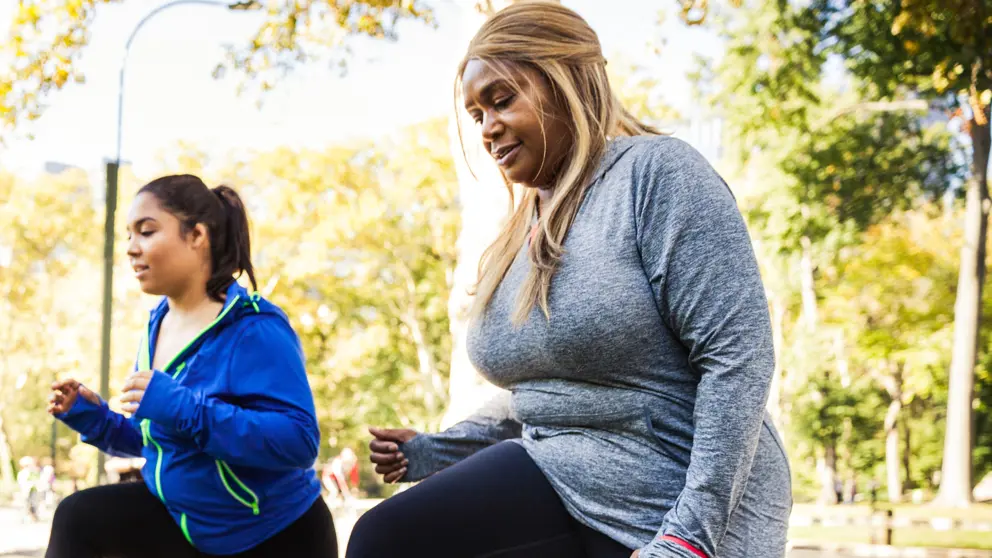Avoiding exercise? It’s likely not for lack of discipline, science suggests. In fact, you might want to cut yourself some slack.
One of the most common mistakes people make, when they’re first getting active, is thinking of exercise in rigid terms. It has to happen in a gym. A treadmill might be involved. You should break a sweat. Repeat.
But it’s that rigidity that can set us up for disappointment, says Dr. Todd Duhamel, Heart & Stroke researcher and principal investigator at the Institute of Cardiovascular Sciences at St. Boniface Hospital in Winnipeg.
Dr. Duhamel has spent part of his career studying behaviour change and what keeps us from getting the physical activity we need to reduce our risk of heart disease, stroke and other diseases. His most recent study looks for strategies that can help employees sit less and move more. Nearly all of the employees recruited to participate in the ENCOURAGE project saw an uptick in their physical activity, with more than half (54%) logging 150 minutes a week.
That’s a lot more than the average Canadian, who accumulates 25 minutes (rather than the recommended 150 minutes) of moderate to vigorous physical activity a week.
Surprisingly, getting people to add physical activity into their daily routines didn’t require them to make a big lifestyle change.
“It’s about really identifying why people connect to physical activity,” Dr. Duhamel stresses. If it’s important to you, if you can schedule it into your day; it’s easier to stick with it.
Changing minds, changing habits
A big part of the ENCOURAGE project focused on shifting people’s idea of what it means to be physically active. For sedentary employees, that meant finding small ways to build activity into their day, like taking the stairs and setting reminders to get up from their desk.
“Sedentary time is not opposite of exercise; it’s actually its own risk factor,” says Dr. Duhamel. “And there’s emerging evidence that standing up every hour will make you healthier. If you can get that higher intensity exercise, that’s a bonus and where we need to aspire to.” But, he says, it’s important to start with the most sedentary people, getting them to add even a little movement to their days.
Study participants received guidance from a kinesiologist to identify the types of activities they enjoyed, as well as referrals to local community programs near their home or workplace that offered a program at the right intensity.
What if you don’t like to exercise at all? Perfectly normal, says Dr. Duhamel.
“Myself, I hate exercising. But I really like doing something for a purpose. I’ll go outside and work for eight hours a day working at my cottage because I like doing that. There’s a purpose to it. But I won’t go run on a treadmill.”
He stresses that gyms and structured exercise programs aren’t the only ways to add physical activity to your day. For example, in Indigenous cultures, there are plenty of land-based activities that increase physical activity. You just move because you’re out in the environment. It’s natural.
So, if spending time with your family is important, can you look for ways to build activity, like a trip to the park, into your time together? It’s an improvement over sitting on a couch watching TV together. “The reality is it’s more risky to sit on the couch than it is to go to any exercise program, generally.”
Before you start
Think about why you want to be active, Dr. Duhamel recommends. Then, think about why you enjoy it. Write that down on a piece of paper and keep coming back to it.
It’s easy to lose sight of why we’re doing something. We tend to focus on the activity way more than why we’re actually doing it.
If your purpose is to have fun or be healthier so you can spend time with your kids, just stopping and thinking about that for a moment is proven to have some effect on our physical behaviour. It reminds you what’s important. From there, you have a clearer path to the activity that’s right for you.
